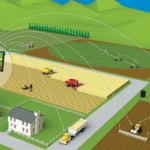Emerging economies fail to achieve the United Nation’s Sustainable Goals. Smallholder Farmers follow low-intensity farming practices that produce low yields. Since they have limited market access, they incur insufficient profits.
Contract Farming modernizes the agricultural sector by improving household welfare, bridging the gap between poor farmers and accessible markets. It can be defined as a preharvest agreement between the farmers and the buyers.
According to the market database, case studies associated with contract farming are generally confined to small areas. Large scale application of this method is yet to be explored. In most countries, contract farming stimulates increased demand for hired labor. This is due to the increased emergence of middle-class farmers. These cultivators are reliant on the labor market to meet their production standards. Thus, contract farming increases the direct employment rate amongst agribusinesses. This in turn adds to the value chain associated with the Agricultural Industry.
Smallholder farmers have inadequate capital which acts as a growth-limiting factor. This is due to the lack of finances suffered by these classes. These farmers fail to meet the commodity demand margins placed by the buyers. Hence, field management practices are used by farmers to optimize crop quantity and quality. Smallholder farmers fail to get the essential technologies due to a lack of investment. Inadequate knowledge about modern agriculture amongst these crop cultivators is another limitation. Thus, several policymakers have instated reforms that promote the application of sustainable farming. Hence, contract farming mitigates the risks faced by smallholder farmers.
The globalization of agricultural trade is another factor that drives demand margins. Enhanced farmer welfare linked to this practice portrays it as a productive practice. The rise in household income amongst these farmers is a key factor that boosts their morale. Moreover, increased procurement of funds is proportional to the rise in capital investment.
Additionally, contract farming influences household welfare through different channels. The preharvest stage incurs a huge capital investment on the farmers’ side. Although the size of the farm produce remains unknown to the farmer at this stage, the price of the commodity also remains uncertain at the supplier end. Hence, the income of the farmer is variable. This in turn curtails the capital investment due to budget limitations.
According to the market database, the discrepancy linked with the transactional costs can be reduced. The contracts outline the price for a predefined quantity. It offers more marketing options to the farmer thus optimizing the supply chain. The farmer can obtain a steady household income which supports smart investments. Contract farming can improve a farmer’s access to financial services. It is poised to lead to a rise in capital investment and higher productivity.
According to the Global Market Database, the introduction of smart farming has generated a vast change amongst agribusinesses. The free market data obtained from this tool can study the change in market trends.
Reforms like contract farming and policies imposed by governments affect global agronomics. The inclusion of these reforms encourages rural development. This acts as a key driver associated with this practice. Moreover, growth in disposable income amongst the participating rural population promotes urbanization.
Contract farming requires a few pre-requisites to be a participating household. For instance, the farmer should have land ownership. They also need to have the means to make an initial investment. Several segments believe that these limitations further marginalize the underdeveloped regions. Consecutively, a non-participating household can get indirect benefits through contract farming. This method adds to the multiplier effect by generating indirect and induced jobs. Spillover effects like increased investment in local infrastructure support urbanization.
Moreover, contract farming is very often associated with labor-intensive crops, technologies, and standards. This farming method is expected to enhance the requirement for hired labor. Thus supporting the local wages of the domestic population. Export-oriented contract schemes initiated by private companies can increase regional productivity. Global Market Database can produce a competitive mapping of the global agricultural landscape. This market research tool studies 12 different industries across the globe.
The growth of modern agricultural support practices has increased in the past decade. The need for food substances grows as the population expands. Thus the value chain of this industry has branched out tremendously. Integrated farming practices are used to scale up production capacities. Factors like constraints associated with arable land enforce the optimization of existing technology. Tools like Global Market Database can further the cause of sustainable farming.


